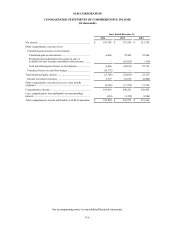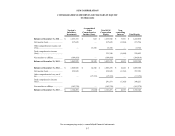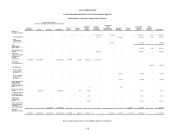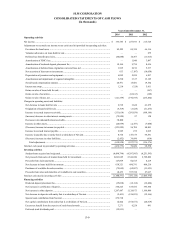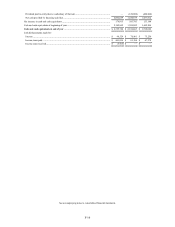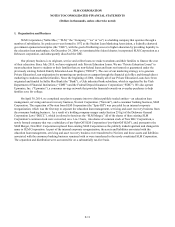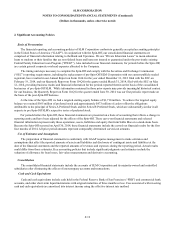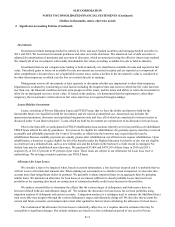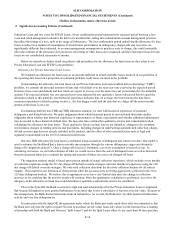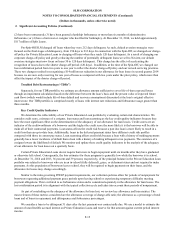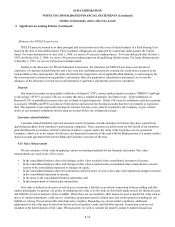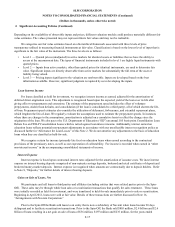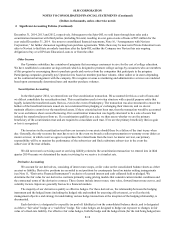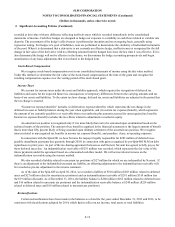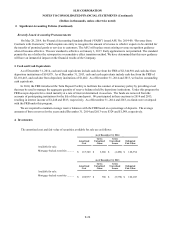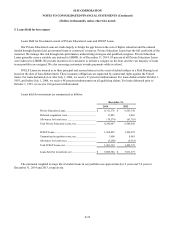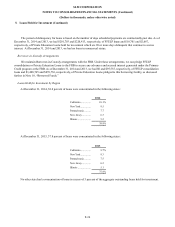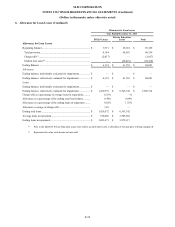Sallie Mae 2014 Annual Report Download - page 100
Download and view the complete annual report
Please find page 100 of the 2014 Sallie Mae annual report below. You can navigate through the pages in the report by either clicking on the pages listed below, or by using the keyword search tool below to find specific information within the annual report.SLM CORPORATION
NOTES TO CONSOLIDATED FINANCIAL STATEMENTS (Continued)
(Dollars in thousands, unless otherwise noted)
2.
Significant Accounting Policies (Continued)
Allowance for FFELP Loan Losses
FFELP Loans are insured as to their principal and accrued interest in the event of default subject to a Risk Sharing level
based on the date of loan disbursement. These insurance obligations are supported by contractual rights against the United
States. For loans disbursed on or after July 1, 2006, we receive 97 percent reimbursement. For loans disbursed after October 1,
1993, and before July 1, 2006, we receive 98 percent reimbursement on all qualifying default claims. For loans disbursed prior
to October 1, 1993, we receive 100 percent reimbursement.
Similar to the allowance for Private Education Loan losses, the allowance for FFELP Loan losses uses historical
experience of customer default behavior and a two-year loss confirmation period to estimate the credit losses incurred in the
loan portfolio at the reporting date. We apply the default rate projections, net of applicable Risk Sharing, to each category for
the current period to perform our quantitative calculation. Once the quantitative calculation is performed, we review the
adequacy of the allowance for loan losses and determine if qualitative adjustments need to be considered.
Deposits
Our deposit accounts are principally certificates of deposit (“CD”), money market deposit accounts (“MMDA”) and high
yield savings (“HYS”) accounts. CDs are accounts that have a stipulated maturity and interest rate. Early withdrawal of
Brokered CD’s is prohibited (except in the case of death or legal incapacity). Retail CD’s may be withdrawn early but a penalty
is assessed. MMDA and HYS accounts are both interest and non-interest bearing accounts that have no maturity or expiration
date. The depositor is not required by the deposit contract, but may at any time be required by the Company, to give written
notice of any intended withdrawal not less than seven days before the withdrawal is made.
Upromise related liabilities
Upromise related liabilities represent amounts owed to Upromise rewards members for rebates they have earned from
qualifying purchases from Upromise’s participating companies. These amounts are held in trust for the benefit of the members
until distributed in accordance with the Upromise member’s request and/or the terms of the Upromise service agreement.
Upromise, which acts as the trustee for the trust, has deposited a majority of the cash with the Bank pursuant to a money market
deposit account agreement between the Bank and Upromise as trustee of the trust.
Fair Value Measurement
We use estimates of fair value in applying various accounting standards for our financial statements. Fair value
measurements are used in one of five ways:
• In the consolidated balance sheet with changes in fair value recorded in the consolidated statement of income;
• In the consolidated balance sheet with changes in fair value recorded in the accumulated other comprehensive income
section of the consolidated statement of changes in equity;
• In the consolidated balance sheet for instruments carried at lower of cost or fair value with impairment charges recorded
in the consolidated statement of income;
• In the notes to the consolidated financial statements; and
• In the measurement of related party transactions.
Fair value is defined as the price to sell an asset or transfer a liability in an orderly transaction between willing and able
market participants. In general, our policy in estimating fair value is to first look at observable market prices for identical assets
and liabilities in active markets, where available. When these are not available, other inputs are used to model fair value such as
prices of similar instruments, yield curves, volatilities, prepayment speeds, default rates and credit spreads (including for our
liabilities), relying first on observable data from active markets. Depending on current market conditions, additional
adjustments to fair value may be based on factors such as liquidity, credit, and bid/offer spreads. Transaction costs are not
included in the determination of fair value. When possible, we seek to validate the model’ s output to market transactions.
F-16


